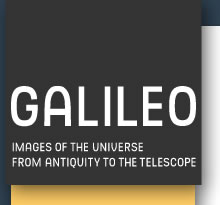


The publication of Nicolaus Copernicus' De revolutionibus in 1543 marked a crucial turning point in the history of astronomy. The Polish scholar defined a system of the world in which the Sun occupies the central position, while the Earth rotates on its axis every day, performing a full revolution around the Sun every year. Copernicus' rejection of the dogma of the Earth's centrality and immobility marked a radical change not just in the field of astronomy. Displaced from his traditional position in the centre of the Universe, man was shaken in his belief in a cosmos designed expressly for him and to his measure. Copernicus' vision caused traumas too deep for it to be easily assimilated; only a few enlightened minds accepted it.
The theories of the Danish nobleman Tycho Brahe (1546-1601) enjoyed greater popularity. Tycho, a great innovator in the field of instrumentation and in the organisation of research (he established the first observatory worthy of the name), made a multifaceted contribution to the reform of astronomy. His observations were infinitely more accurate than those of his predecessors; he proved that the heavens did not consist of solid spheres, as was commonly believed at the time, but were fluid. He conceived a new world system, which represented a compromise between the geocentric theory and the heliocentric view. According to Tycho, the Earth stands motionless in the centre of the universe; the Sun and the Moon rotate around it, while the other planets orbit around the Sun.